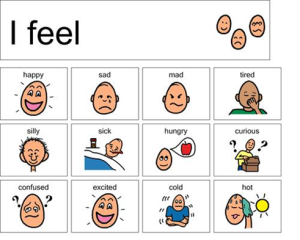Recognising emotions is a key skill for children to learn as part of learning how to manage states.
A state is any emotion or feeling, at any given time. We are all in ‘state’ all the time. These states vary throughout the day and are usually a mixture of a wide variety of states.
Some children learn to name ‘states’ quicker than others. Some children find it very difficult to know the ‘states’ that they feel. States that are polar opposites are usually quickly identified, a child can usually easily recognise happy from sad or calm from angry. However, some states are more similar.
Why are some emotional states more similar?
The physiological state of excitement is an excitatory state and so is nervousness. They both involve adrenaline which is a stress-response hormone. For children who struggle to identify the difference between excitement and nerves, these two states may be in a similar place in the physical body.
If you were to ask your child where they ‘feel’ excitement – as in their physical body, typically children will either identify this as in their chest, stomach or sometimes the head. Most frequently the state of excitement is felt in the chest/stomach area.
If you were to ask your child where they ‘feel’ nervousness, typically some would identify this to be a very similar place to excitement.
Identifying how children are feeling
As grown-ups I am sure you’ve experienced times when you’ve just not been able to find the words for how you feel. Words account for about 7% of our experiences, the rest is made up of our other senses such as:
-
Visual
-
Auditory
-
Feeling
-
Smell
-
Taste
Happy Confident Kids coaches go several steps further into working out detailed information about an individual’s emotional state. We look at, what is:
-
the location
-
the colour
-
the shape
-
the size
-
the texture
-
the tone
-
the sound/silence
-
the speed/tempo/rhythm
-
the weight
This allows us to understand the fine details of a child’s experience and then help them identify and change the experience, especially if it is holding them back from feeling happy and confident.
They also look at:
-
Balance
-
Movement of body
-
Awareness of where your body is within the space around you
-
Internal experience
-
External stimuli
And all this is done by highly skilled coaches without the child knowing so that we can help them change it to become more confident and happy.

Children who are overwhelmed, anxious, depressed or worried can also find words difficult to find. Most people have a strong visual aspect of their experience, therefore helping them to label their emotional state by giving them a visual aid can make it much easier for them to learn how to express their emotions.
Our 1-2-1 coaching sessions and also our In the Wild school workshops help children to both identify and manage emotions. Email us hello@happyconfidentkids.com for more info.
